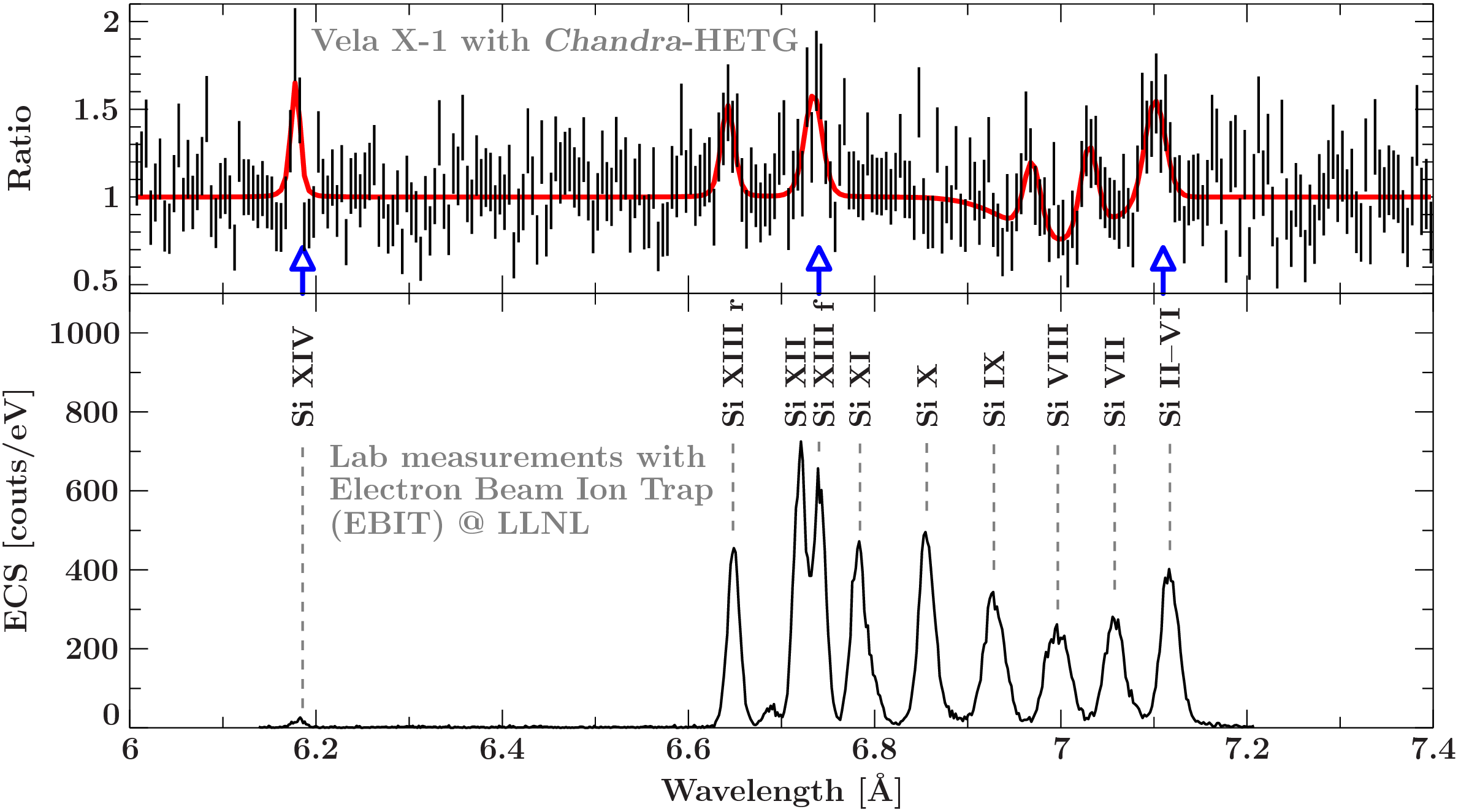Daily Image
18-05-2017Today's Colloquium: X-raying the clumpy winds of giant stars
| Submitter: | Victoria Grinberg |
| Description: | We are made of stardust or, at least in significant parts, of material processed in stars. Hot, massive giant stars can drive the chemical evolution of galaxies and trigger and quench star formation through their strong winds and their final demise as supernovae. Yet, optical and X-ray measurements of the wind mass loss strongly disagree and can only be reconciled if the winds are highly structured, with colder, dense clumps embedded in a tenuous hot gas. But in (quasi-)single stars wind properties are inferred for the whole clump ensemble. No measurements of individual clumps or clump groups are possible. Luckily, nature provides us with perfect laboratories to study clumpy winds: high mass X-ray binaries (HMXBs), systems where a neutron star or a black hole accretes matter from the wind of a giant stellar companion and emits the so freed energy mainly in the X-ray band. This radiation is quasi-pointlike and effectively X-rays the wind, in particular the clumps crossing the line of sight towards the neutron star or black hole. I will show how we can use a variety of observations of the two of the brightest high mass X-ray binaries, Cyg X-1 and Vela X-1 to constrain wind properties. In particular, the long-term changes in absorption seen with RXTE reveal the dynamics of clump movements as well as wind porosity while the high resolution spectra obtained with Chandra-HETG and XMM-RGS hint on the layered temperature profile and comet-like structure of individual clumps. |
| Copyright: | Victoria Grinberg |
| Tweet |  |
